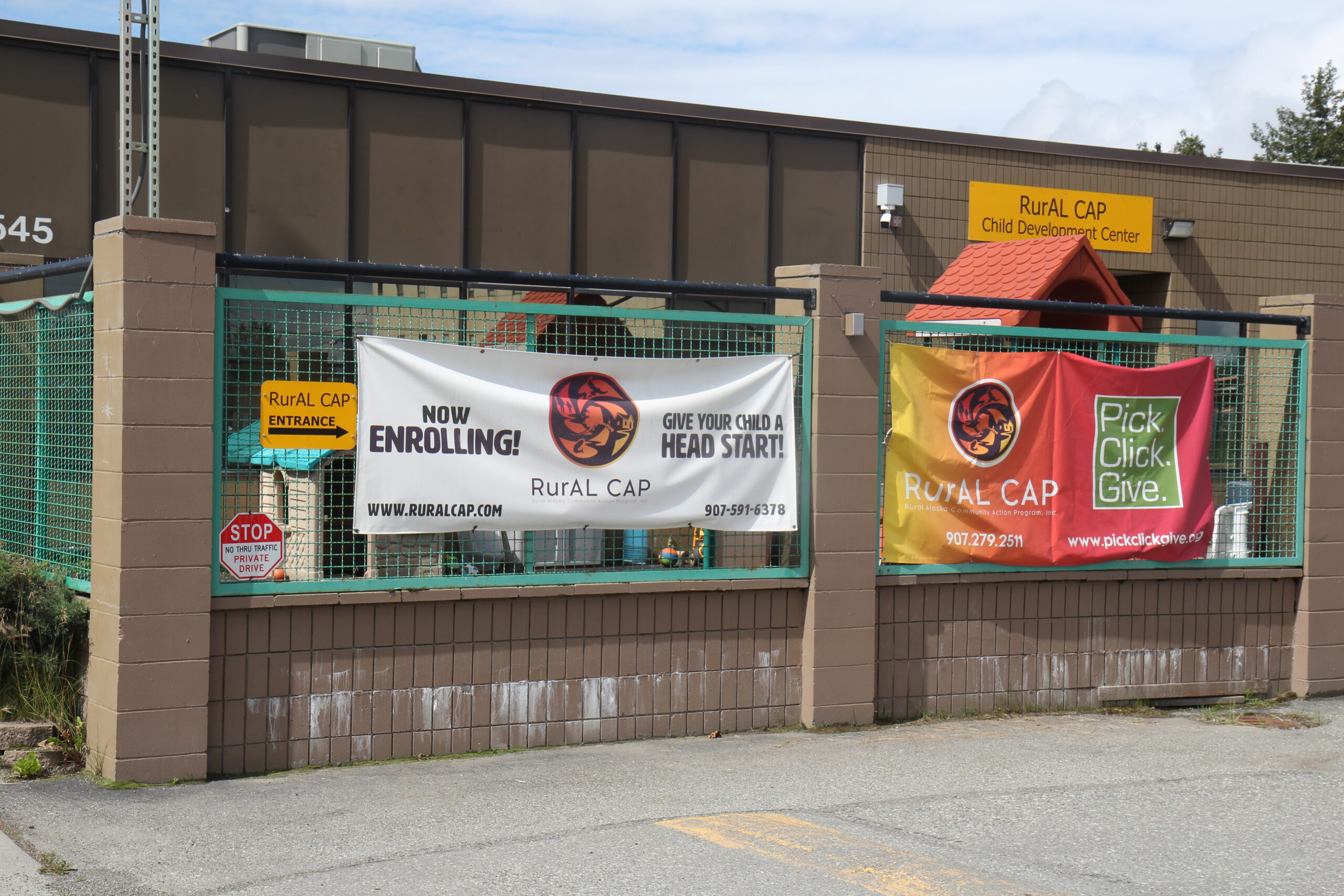
Almost half of Alaska’s Head Start early learning programs are in danger of losing millions of dollars in federal funding due to underenrollment.
The potential loss of Head Start funding comes as the state faces a child care crunch, with lengthy waitlists and rising costs putting a burden on Alaska families.
Head Start is a federal program that provides early childhood education for free, primarily to low-income families, as well as foster kids and children with disabilities.
“We work with not just the kids but the families, and that’s what makes Head Start different,” said Anne Shade, director for child development with Bristol Bay Native Association. “Head Start tries to help the family get on track, learn how to advocate for their kid, navigate the special-ed system if they need it, set family goals.”
Bristol Bay Native Association is one of 17 Head Start grantees in Alaska. The program is funded for 80 children total, from the hub community of Dillingham to the villages of Togiak, New Stuyahok and Manakotak.
But — right now — it only has staffing to fill 53 of the spots. And its federal grant is at risk. In a letter that BBNA received at the end of May, officials with the federal Office of Head Start gave the program a year to increase enrollment numbers, or else it could lose $594,502 in federal funding.
“It would severely cripple it,” Shade said. “We’ve got a $1.6 million Head Start grant. But you know, it’s not like you can drop five kids or 10 kids because you have to drop a whole classroom to save any money. And each classroom runs at about 100 grand a year.”
In total, officials with the Alaska Head Start Association say, federal officials have told eight Head Start programs that they could lose as much as $12.5 million in funding due to underenrollment.
Shade said BBNA’s biggest issue is staffing. Until it has more employees, it can’t enroll more children, since there’s a ratio requirement.
“Each of our classrooms has three people in it and 16 kids,” Shade said. “So if I don’t have people in the classroom, I can’t serve kids.”
She said it’s been difficult to compete with wages in other industries.
“Somebody lost somebody to Bailey’s Furniture. We’ve lost people to Starbucks,” Shade said. “They’re all paying more hourly than we do. And the work is hard, Head Start is hard.”
Additionally, some say there are barriers to entry that make hiring for Head Start programs difficult.
Francine Cachucha is director of Early Childhood Education with the Fairbanks Native Association, another Head Start grantee that is currently underenrolled by about 53%. The program serves families in Fairbanks as well as North Pole, Ester and Salcha.
She said while the program’s wages are fairly competitive, it has had issues with applicants not passing drug tests. Additionally, she said, there’s a backlog of background checks at the state and federal levels, holding up the hiring process.
“When I called in to check, they said, ‘Yeah, we’re short staffed just like you guys,’” Cachucha said.
A spokeswoman for the state Department of Health said there are no currently pending background check applications for Head Start.
Cachucha said her Head Start program has a waitlist of students ready to enroll, once they hire more people.
It was alerted in January that it could lose more than $3 million in federal funding due to underenrollment. Cachucha said that funding loss could impact paying for the building and salaries and could result in the closure of classrooms. She also worries that a permanent decrease in Head Start spaces would force parents to send their kids to pricier alternatives.
“It’s very expensive. It’s $700 or more a month for families per child,” Cachucha said. “So families simply can’t afford child care.”
The other Head Start programs that are in danger of losing federal funding due to underenrollment are CCS Early Learning Center in Wasilla, ThrivAlaska in Fairbanks, Aleutian Pribilof Islands Association, Metlakatla, Kawerak, RurAL CAP, Tanana Chiefs Conference and Tlingit & Haida.
Head Start program managers said they’d hoped to get an increase in state funding this year so they could raise salaries to help with hiring, and then open more child care spots for children once they had more staff.
This year, legislators had allocated an additional $5 million to Head Start, but Gov. Mike Dunleavy vetoed some of the funding, reducing it to $1.5 million. The federal government notified Head Start programs about the underenrollment before the governor’s veto.
Shade with BBNA said the federal government requires a 20% match in funding from a non-federal source, and the state of Alaska had covered that cost for years.
“Over the years, as the funding has remained flat funded, that percentage has dropped to somewhere around 12% right now,” Shade said. And so if we would have been given the extra $5 million, that would have covered everybody’s non-federal share.”
For now, Shade said she’s hopeful that Dunleavy’s child care task force will help address concerns. Its next meeting is July 26.
Wesley Early covers Anchorage life and city politics for Alaska Public Media. Reach him at wearly@alaskapublic.org and follow him on X at @wesley_early. Read more about Wesley here.





